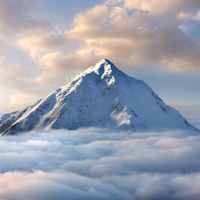Mulberry Trimming – Learn When And How To Prune A Mulberry Tree


Mulberry (Morus spp.) trees are fast-growing, deciduous trees known for their variable leaf shapes, their delicious berries, and the terrible stains those berries can make if they hit the sidewalk rather than someone’s mouth. Some have red fruit while others produce tasty purple or white fruit.
A fruitless cultivar exists for those not interested in those yummy, messy berries. Mulberry trees can reach 30 to 70 feet tall (9-21 m.) depending on the species. They are fantastic shade trees. Due to their quick growth, pruning mulberry trees is often necessary.
Mulberry Trimming
Proper mulberry tree pruning techniques depend on your landscape goals. If you want to create a shady spot that provides food and shelter for birds as well as biomass for your compost bin, only cut out small, dead, diseased, crossed-over and oddly oriented branches.
In this case, mulberry trimming can be done every two to three years. If your primary goal is fruit production for human consumption, then mulberry trimming should be done every year to control size and to keep most of the fruit within easy reach.
Note that mulberries bloom and fruit on the previous year’s growth, so extensive pruning will reduce fruit production.
Pruning mulberry trees that are too large for their space is often executed via a technique called pollarding. With pollarding, all the smaller branches are removed annually to a selected area on larger scaffold branches.
I don’t like to recommend pollarding because it is most often done wrong. When the pollard form of mulberry tree pruning is done incorrectly, it can leave a tree that is unsafe, ugly, and prone to disease.
Sign up for the Gardening Know How newsletter today and receive a free copy of our e-book "How to Grow Delicious Tomatoes".
How to Prune a Mulberry Tree
If you are wondering how to prune a mulberry tree, start with sharp, clean tools. Do not struggle while cutting through a branch. If this happens, your tool is too small. Use a hand pruner for cuts under 6 inches (15 cm.) and loppers for cuts 1 to 2 inches (2.5-5 cm.). You can also use a good saw for cuts 1 inch (2.5 cm.) and larger. Try not to cut branches larger than 2 inches (2.5 cm.) in diameter.
Mulberry trimming should not be done on large branches unless you accept the fact that large wounds don’t heal very quickly and leave open the door for pests, disease, and heart rot. Pruning trees in pollard form should be started when the tree is quite young and the scaffold branches have grown to the height you wish for in the canopy. Always cut the smaller branches back to their base on the scaffold.
A round callused knob will form over the years. Always cut to the knob but not into it. Do not leave a stub that is more than ½ inch (1 cm.) at the knob. Do some research on pollarding before you cut the tree. If you inherit a large tree that was pollarded in the past but not maintained properly over the years, hire a certified arborist to get it back into shape.
When to Prune Mulberries
Mulberry tree pruning is easiest when the tree is dormant. You can see the structure of the tree without it being obscured by leaves. Don’t prune when the weather is very cold. When the temperature is under 50 degrees F. (10 C.), it is harder for the tree to seal off its wounds. A good time for mulberry trimming is in spring prior to the buds turning green.

Karen Boness is the founder of Wild Willow Design, an Australia-based company that specializes in ecological landscape design.